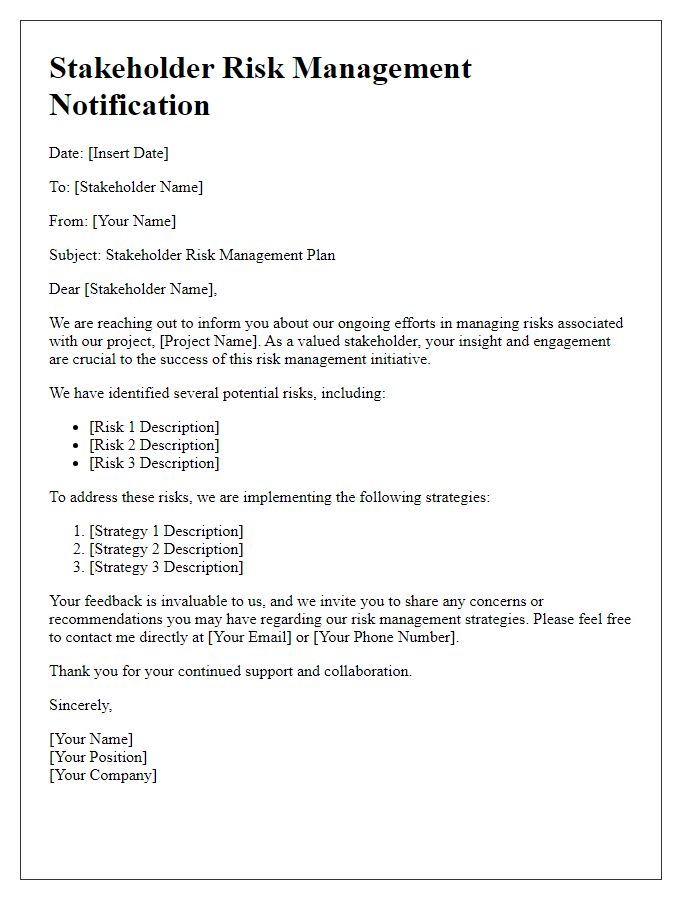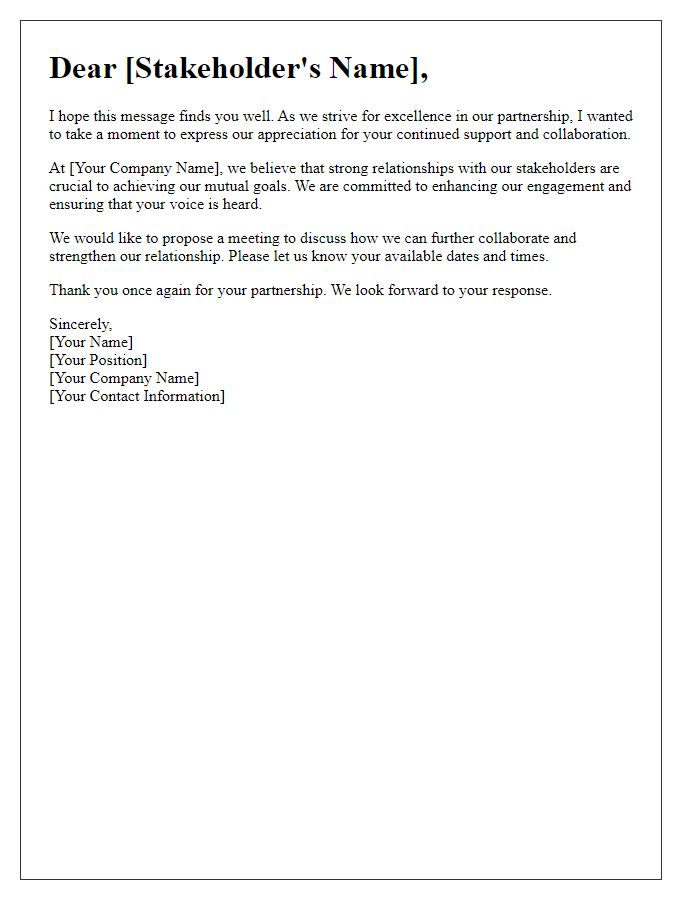Navigating stakeholder expectations can feel like a balancing act, but it's crucial for the success of any project. In this article, we'll explore effective strategies for managing these expectations while fostering positive relationships. From clear communication to setting realistic goals, you'll discover practical tips that can make a significant difference. So, let's dive in and uncover the secrets to successful stakeholder engagement!

Clear Objectives
Clear objectives play a crucial role in stakeholder expectations management, establishing a foundation for mutual understanding and success. Identifying specific targets, such as project milestones or performance metrics, allows stakeholders to measure progress effectively. For instance, a project aiming to enhance renewable energy capacity by 25% in a year sets tangible benchmarks for evaluation. Regular updates and transparent communication ensure stakeholders remain informed and engaged. Utilizing tools like stakeholder mapping and analysis can further clarify goals and expectations, aligning interests across diverse groups, such as government agencies, investors, and community members. This strategic approach fosters trust and collaboration, essential for achieving project aims and maintaining positive relationships.
Transparent Communication
Transparent communication fosters trust and clarity among stakeholders in any project. Clear and open channels for sharing information, such as weekly progress reports (including updated timelines and milestones), can significantly enhance engagement and align expectations. Scheduling regular meetings, whether virtual or in-person, allows for immediate feedback (identifying potential issues early) and strengthens relationships. Using collaboration tools, such as Slack or Microsoft Teams, enables real-time updates, ensuring stakeholders remain informed about critical developments. Documenting key decisions and sharing them via email or intranet systems ensures all parties have access to essential information, promoting accountability and shared understanding.
Regular Updates
Regular updates are crucial for managing stakeholder expectations within project management frameworks. Frequent communication, ideally on a bi-weekly basis, ensures all stakeholders remain informed about progress, challenges, and milestones. Utilizing platforms like Microsoft Teams facilitates transparent interactions, while established project timelines can track deliverables against key performance indicators (KPIs) such as budget adherence and schedule compliance. Detailed updates should include quantitative data, such as percentage completion rates and risk assessments, to maintain clarity. By proactively addressing stakeholder inquiries and adjusting project scopes as necessary, teams can foster trust and enhance collaboration throughout the project's lifecycle.
Stakeholder Engagement
Stakeholder engagement involves building and maintaining relationships with individuals or groups that have an interest in or are affected by a project. Effective stakeholder management requires identifying key stakeholders, analyzing their expectations, and developing a tailored communication strategy. The Project Management Institute (PMI) emphasizes the importance of understanding stakeholders' needs and aligning project objectives to address those needs. Various tools, such as stakeholder matrices and engagement plans, help assess levels of influence and interest, ensuring a strategic approach to keep stakeholders informed and involved throughout the project lifecycle. Regular updates, feedback sessions, and open lines of communication are essential for managing expectations and fostering collaboration, ultimately contributing to project success.
Feedback Mechanism
Effective feedback mechanisms are essential for managing stakeholder expectations in a project environment. Regular surveys, such as monthly pulse checks, provide quantitative data on stakeholder satisfaction and engagement levels. Focus groups, consisting of diverse stakeholders, allow for qualitative insights into perceptions and potential issues. Utilizing digital platforms, like dedicated project management software or collaborative tools such as Slack or Microsoft Teams, facilitates real-time feedback and communication. Analyzing response trends can uncover patterns that indicate areas of concern, ensuring proactive adjustments to project direction. Establishing a clear timeline for feedback collection and reporting, typically bi-weekly or quarterly, maintains transparency and demonstrates responsiveness to stakeholder needs.













Comments